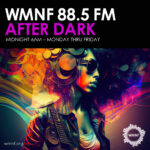
“The men liked to put me down as the best woman painter. I think I’m one of the best painters.”
Georgia O’Keeffe
Here are some links and general information about women’s presence in the performing and visual arts. The gist of the information is that maybe things are slightly better than they were a few years ago. That is sadly the best spin that can be put on these stats.
Theater:
http://www.wbur.org/artery/2016/04/13/women-in-theater-boston
http://theatrewomen.org/women-count-2015/
https://www.wcwonline.org/Active-Projects/womens-leadership-in-resident-theaters
These three articles, citing studies conducted this decade, look at different roles of women in offstage roles. Examining the artistic personnel, the 2 jobs most frequently occupied by a woman – Stage Manger and Costume Designer, average salaries around $40k and $50k, according to Glassdoor.com. When women are hired by theaters for productions, they often hire the same women for each production, rather than spreading out the love. For example, women make up a very small percentage of sound designers. The following is from a study of 455 Off- and Off-Off-Broadway productions by 22 companies:
- Study women sound designers ranged from a high of 22% in 2011-2012 to a low of 14% in 2013-2014. Five sound designers account for 93% (79 of 85) of sound design credits for women during the study report’s 5 seasons. 41% (35 of 85) of sound design credits by women during the study period are for Jill BC Du Boff.
Here are cool ideas about getting more plays by women in front of decision makers, and rewarding gender parity theaters.
Visual Arts
Great infographic about women’s roles in the arts from the National Museum of Women in the Arts.

The Atlantic had a great article at the end of the last year which looked at the wave of all-women art shows which flowed from Miami to the West Coast, and explored if these shows could and should have any impact on art. Most women artists don’t want to be primarily identified by gender (see: Elaine de Kooning, Georgia O’Keefe). But the only way to get past that 5% of the work on museum walls hump is by getting seen.
Since I really don’t expect people to buy my art anyway, and because I don’t have to worry about funding or being censored at this point, I thought I might as well really try to pull out all the stops and just make something that directly deals with sexuality and censorship without compromising my values. – Cindy Sherman
And there is a good peek into some concepts about collectors and the art they wish to collect here.
Literature
Women have been writing as long as men, and some old tropes about what women and men are supposed to be writing about have faded. There are still multiple examples though of gender preference in publishing. VIDA, a website about women in the literary arts, last did a count of who was published (here) in 2015. There were a lot of hopeful trends there, whereas hopeful means women getting published nearing the frequency of men in journals, magazines and periodicals.
Also in 2015, Catherine Nichols published her well known article about George. George submitted his novel to agents 50 times, and 17 responded. Catherine, who wrote the novel and made up George, submitted 50 times also, and heard from only 2.
Books with male protagonists, whether written by men or women, tend to receive more literary prizes than ones featuring women, and books by men are more likely to be reviewed and used in classrooms.
The irony in all of this is that women tend to be the people who purchase tickets, books and have started many museums and collections. We will come back and look at what has happened locally with gender and the arts next week.
Leave a Reply









